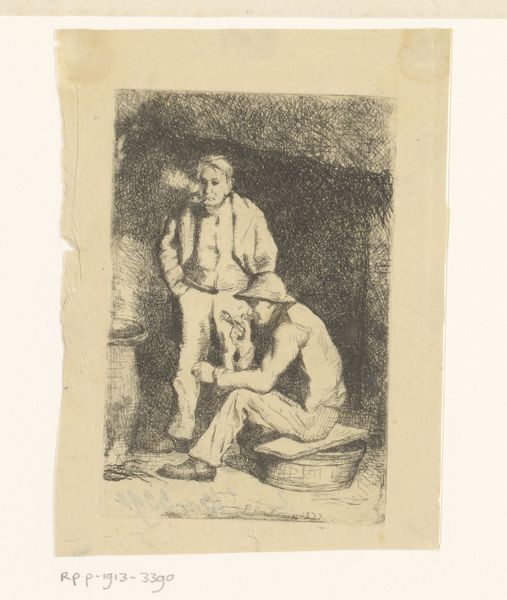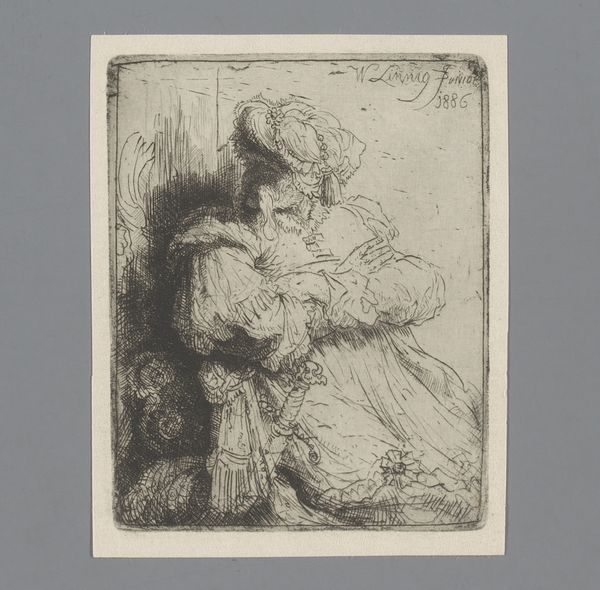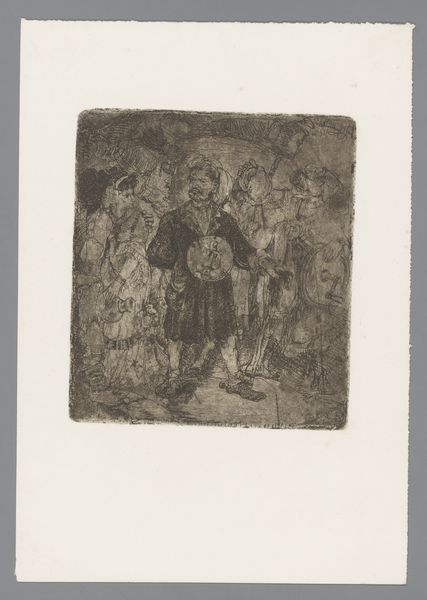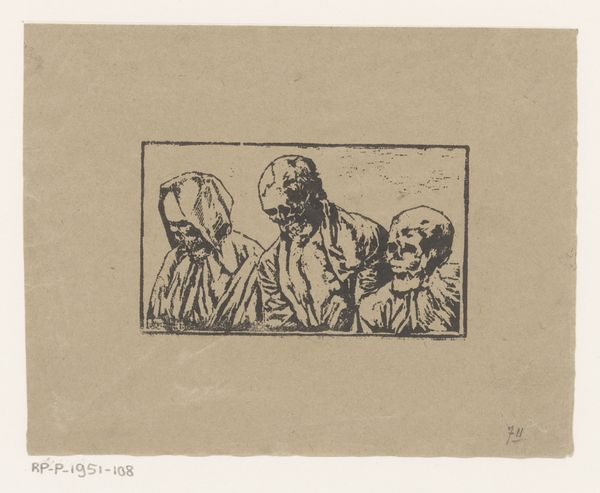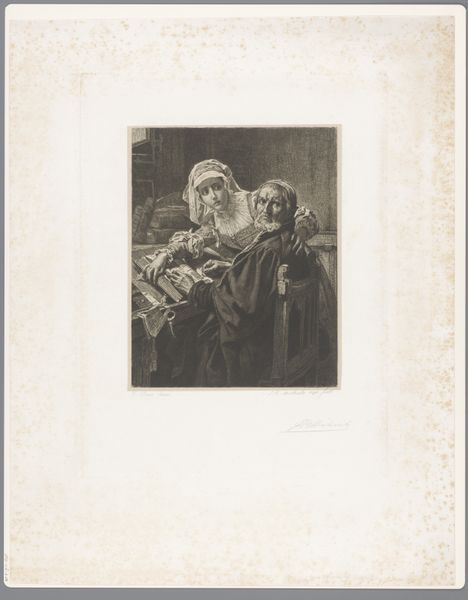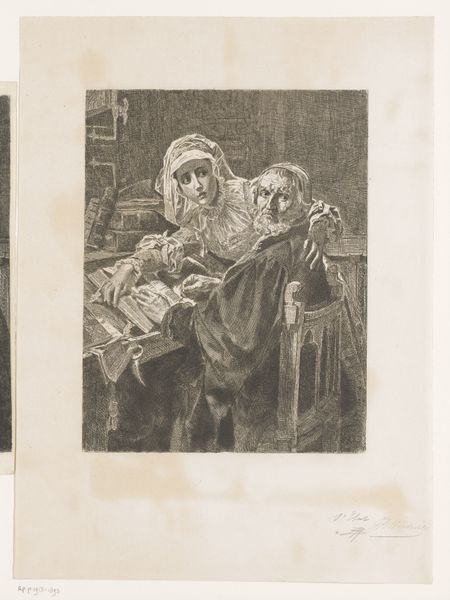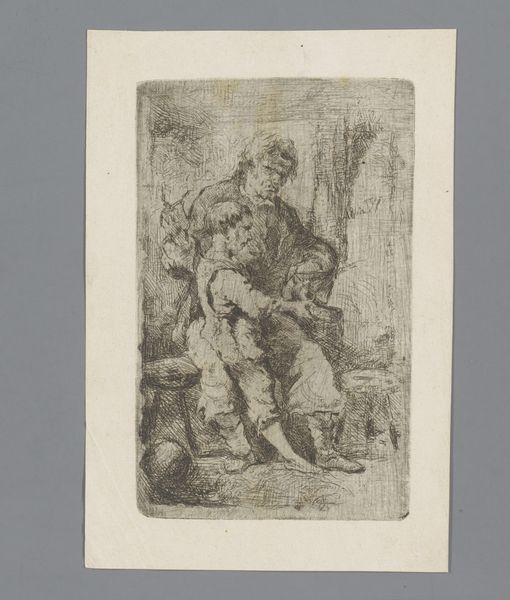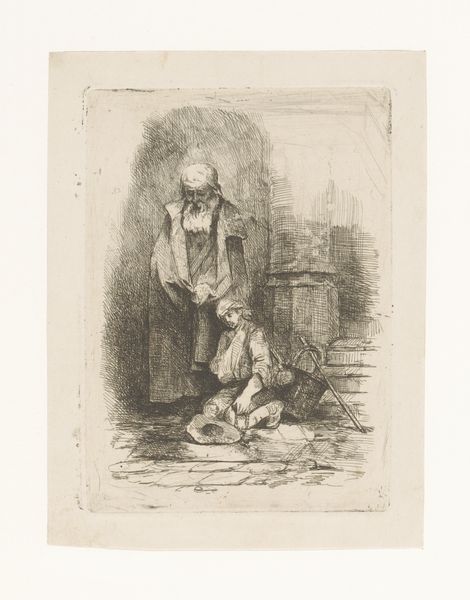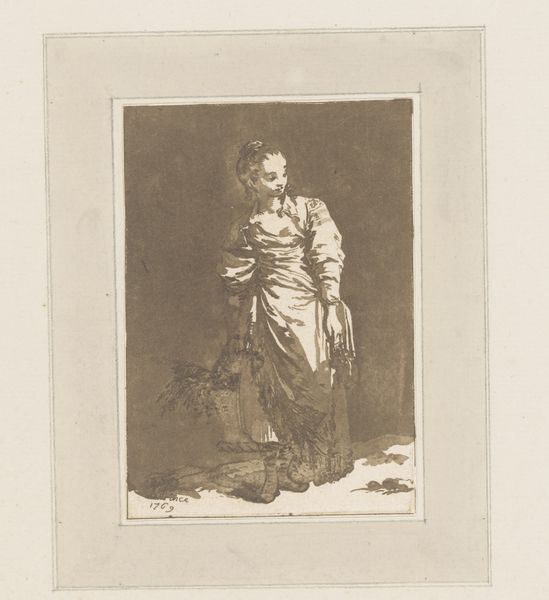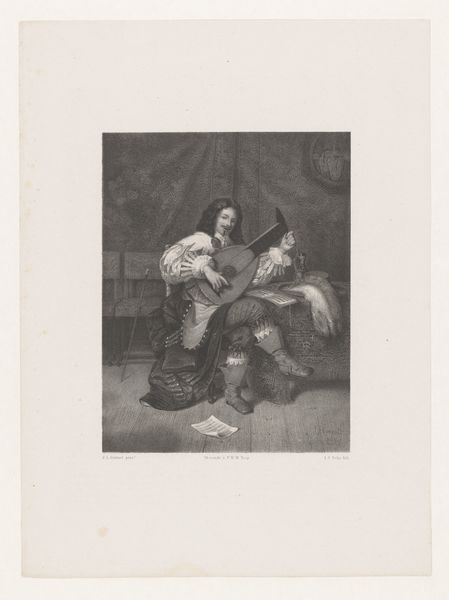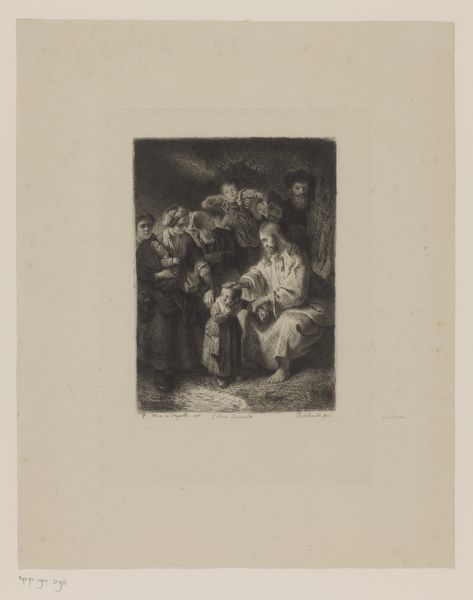
Dimensions: height 110 mm, width 69 mm
Copyright: Rijks Museum: Open Domain
Curator: So, we're looking at Willem Linnig the Younger's print, "Woman with Baby and Man with Flute." It’s estimated to be from between 1852 and 1890. A simple etching on paper, yet so evocative. Editor: Evocative is right. Immediately, I'm struck by a sense of quiet desperation. The stark black and white, the figures huddled close, everything feels… burdened. Curator: Indeed. Consider the flute, an ancient symbol often associated with pastoral serenity and joy, juxtaposed with the mother’s heavy-lidded gaze and the child's utter dependence. The flute is an instrument used for dancing, serenades, and merriment. Here, though? There’s a sorrowful undertone, perhaps speaking to lost hopes or a yearning for better times. Editor: The hatching technique definitely contributes. See how densely packed the lines are in certain areas, particularly around the figures? It's almost claustrophobic. They’re swallowed up. Look at the baby. And the way the shawls wrap around them; there's an echo of traditional depictions of Madonna and Child… but with this deeply unsettling undercurrent. The work flirts with, even acknowledges, a symbolic, sentimental narrative...but is it genuine or a dark mockery of it? Curator: Good point about the shawls – definitely hinting at traditional mother-and-child iconography but without the usual glorification. This contrast might reflect the era's shifting perspectives on family life. You know, it's hard not to think of how rapidly social realities were changing. There is some indication in the composition and etching of influence of Rembrandt, and Daumier--there's poverty, an earthy realism, a movement away from idealized depictions of the past, replaced with an eye to the hardships of modernity. What do you take away from the flautist himself? Is there a hidden message, perhaps to do with the role of artistic expression itself? Editor: The man's downcast gaze feels complicit; a witness. It reminds me of street musicians down on their luck, maybe forced to play joyless tunes. In this tableau, that flute, so associated with pleasure and carefreeness, feels almost weaponized – a stinging reminder of the disparity between life's harsh realities and life's possible gentle mercies. It’s as if Linnig challenges us to confront the uncomfortable truths often glossed over in Romanticism. The figures aren't idealized. There is that shadow from under the rim of his hat! It throws half the man’s face into deep darkness. What can we say other than Linnig does not shirk away from discomfort, does not offer platitudes or comforting fantasies. Curator: Precisely! It makes you pause and reflect on art’s potential to reveal, not just to romanticize. Editor: Absolutely, it resonates beyond the visual, almost hauntingly.
Comments
No comments
Be the first to comment and join the conversation on the ultimate creative platform.
